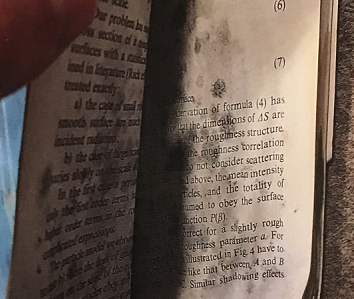The DCMS Libraries Team recently visited the British Library’s 2 sites in London and Yorkshire, to find out what goes on behind the scenes at one of our biggest Arm’s-Length Bodies (ALBs). Here’s what we discovered.

It is not just old books and manuscripts. The collection includes: patents, stamps, sound recordings, maps, music scores, newspapers, magazines, journals, notebooks, scripts, photographs, letters, and many more eclectic items. This includes Jane Austen’s writing desk, Beethoven’s tuning fork and a UK web archive that collected 68 terabytes of web data in 2019 alone. That’s an estimated 2 billion web pages.
The oldest items in the collection are over 3,000 years old, in the form of ancient Chinese oracle bones. The British Library also has the oldest surviving examples of printed text from Japan and one of the earliest Qur’ans.
It has a physical site in Yorkshire. The collection cannot all fit in London, so there’s another library and storage facility in Boston Spa, West Yorkshire. The 44 acres of Boston Spa is a real mix of buildings from state-of-the-art storage and retrieval to converted Second World War munitions buildings.

It uses automated robots to collect things. Well, machines anyway. When you request an item, a system of mechanical arms and conveyor belts searches the shelves and fetches the item, bringing it to the reading room. It is quite mesmerising to watch. Humans are used to move larger or more fragile items. One thousand items travel between its 2 sites (London and Yorkshire) every night, to meet viewing requests from readers and researchers.

The collection covers 746 kilometres of shelving, and grows by 8 kilometres every year. That yearly growth is roughly the distance from 100 Parliament Street (where DCMS is located) to the Cutty Sark in Greenwich.
If you looked at 5 items in the library every day, it would take you 80,000 years to see the entire collection.
The building at London’s St Pancras was the largest building constructed in the UK in the 20th century. It is made from 10 million handmade bricks and the basement goes 24.5 metres (8 storeys) below ground. Soil from the basement excavation was used to build a dry ski slope in Beckton, East London.
They keep books in freezers. This is to help repair water damage. The British Library does its best to protect its artefacts but sometimes the weather wins. Some of its storage facilities at Boston Spa need improving so that damage, like the picture below, can be prevented in future.

They have an emergency response vehicle. Well, it’s actually a quick response conservation trolley. It is loaded with all the things a conservator needs to do small repairs on the spot, rather than using extra time and resources transferring it to the conservation labs. A brilliant idea, though sadly, no blue flashing light or siren.
Thanks to digitisation, you can see hidden parts of the collection. Some of the artefacts the British Library holds are the only copies in the world, for example, the huge Klencke Atlas. The online, digital archive means they can be seen while also being protected.
My favourite bit
I loved seeing a full set of Charles Dickens’ Dombey and Son partworks, a novel which was split into monthly, printed publications. These booklets were purchased cheaply and usually thrown away afterwards, so it was amazing to see a complete set — I just wish I could have touched them.